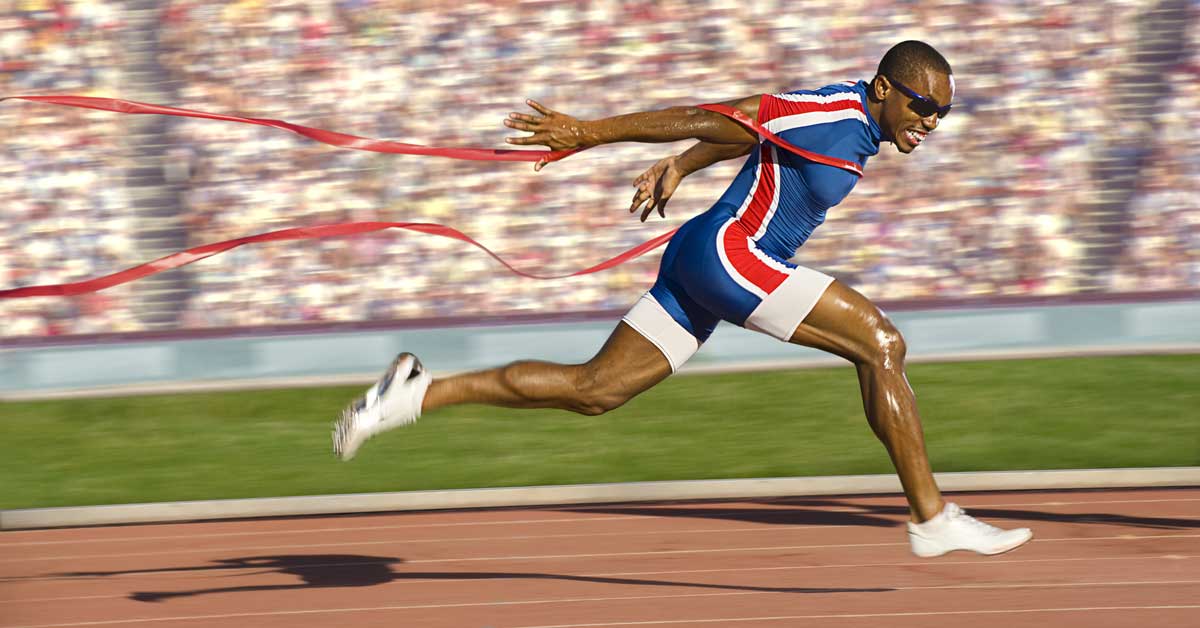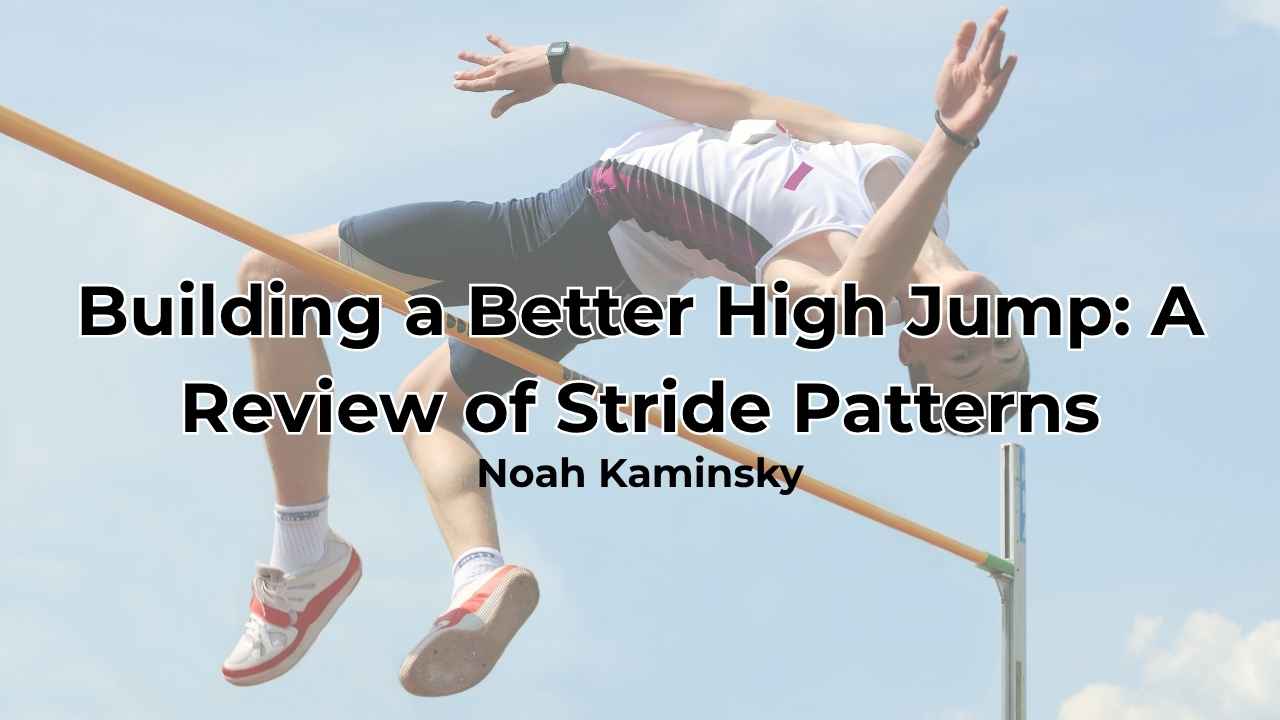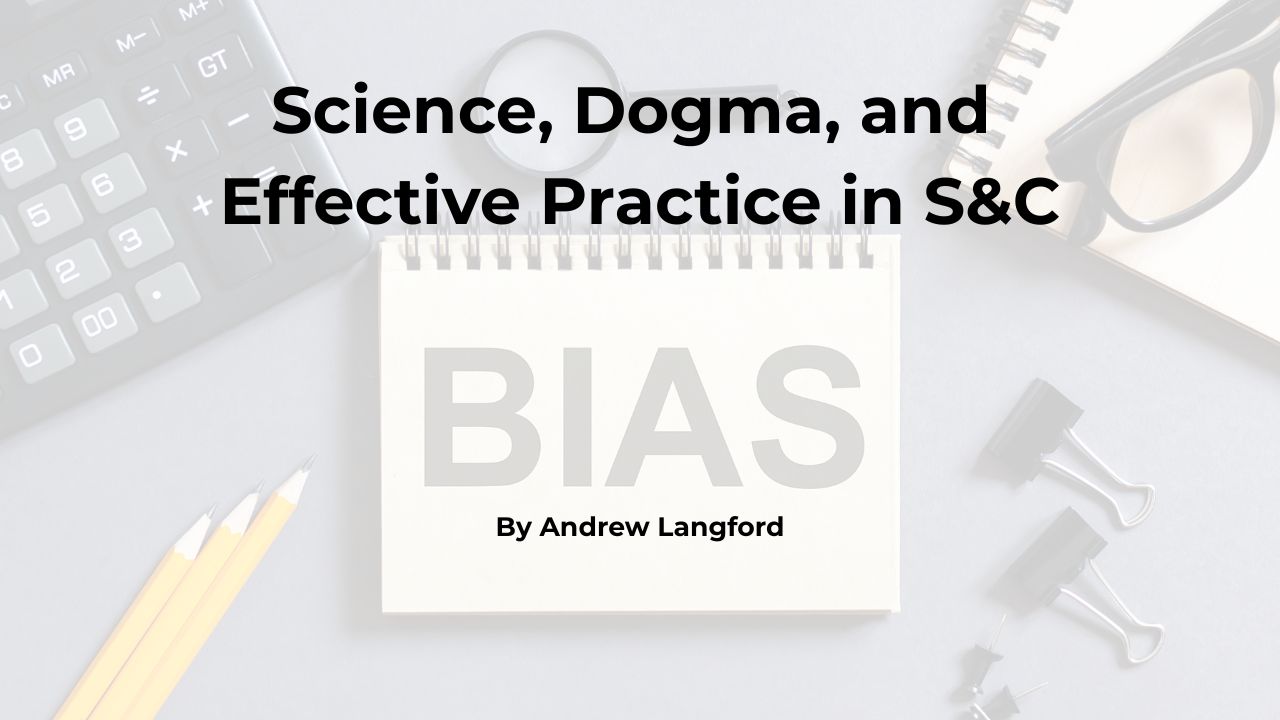[mashshare]

The change of speed in the sprint disciplines has the same repeating dynamics: acceleration, reaching maximum speed, maintenance, and deceleration. Depending on the race distance, however, these areas are different and are affected by the qualifications of the athlete. The priority of a highly skilled sprinter is maintaining maximum speed for as long a time as possible.
While researching the dynamics of running speed in elite male and female sprinters in the 100m, we found that sprinters achieve maximum speed around the 60th meter.1,2 Many of the best sprinters in the 200m reach maximum speed in the second 50 meters of the distance, but there are quite a few cases where they reach maximum speed around 120-130 meters.
So which plays a bigger role in reaching maximum speed—stride length or stride frequency?
Biomechanical Parameters and Speed Development
Speed is a function of the frequency and the length of the stride.3-7 These parameters are interdependent and their optimal ratio allows for a maximum running speed.8 The increase in speed can be achieved by increasing the length or frequency of the stride. There are different viewpoints regarding the importance of stride length and stride frequency when acquiring maximum speed, as well as maintaining it.
Some authors determined that stride length was the most important factor7, while some had the opposite opinion, stating that stride frequency is the more important determinant.4,9 Later, Bezodis et al. tested the speed of elite sprinters and concluded that speed can be individually dependent on either stride length or stride frequency, and the athlete’s training program also plays an important role in determining stride length and stride frequency.10 On the one hand, this is connected to the implementation of various tactical tasks, and on the other, it is connected to the presence of certain neuromuscular disposition and power potential giving the athlete the opportunity to use their speed capabilities.
There is an independent and fairly complex relationship between the indicators of frequency and length of the stride when the purpose is to maximize speed in both sprint events.
The purpose of this research is to reveal the relationship between biomechanical parameters that create conditions for the acquisition of maximum running speed, as well as its reduction in peak performance in men and women in the 100m and 200m races.
Tasks
- To examine the interdependence between biomechanical parameters in men and women in the acquisition and loss of maximum running speed in the 100m;
- To examine the relationship between stride length and stride frequency according to the speed development when running the 200m;
- To determine whether there are any common patterns in the ratio of biomechanical parameters that create conditions for the acquisition of maximum running speed, as well as its reduction in the best performances of the 100-meter and 200-meter races, for both men and women.
Researchers studied the biomechanical parameters of the men’s world records in the 100m and 200m, set by Usain Bolt. They also assessed the women’s 200m world record, set by Florence Griffith, as well as her second-best achievement in the 100m.
Analysis of the Results
In the first phase of acceleration of the 100-meter dash, up to the 20th meter, Bolt realized 78.88% of his maximum speed at the expense of the stride length (l) – 62.45% – and the stride frequency (f) – 85.68%. Meanwhile, Griffith realized 69.48% of her maximum speed with length (l) – 71.48% – and frequency (f) – 89.80%. A study found that excessive high-frequency stride in the first 10 meters of acceleration (over 90% of the maximum) has a negative impact on the optimum connection to the stride length, and this influences the overall development of speed.11
It is interesting that, despite his height, world record holder Bolt reached 100% of his maximum frequency, 88.42% of his stride length, and 90.70% of his maximum speed in the next 20 meters (20-40m). In contrast, Griffith achieved 100% maximum speed from the 40th to the 60th meter, with 95.34% stride length.
Both athletes reached their maximum speed from the 60th to the 80th meter, as Bolt attained 97.19% of (l) and 98.89% of (f), and Griffith attained 99.16 % of (l) and 96.23% of (f).
It is confirmed that the maximum speed is not a combination of the best indicators of the two components of speed, (l) and (f). It is noteworthy that Bolt managed to maintain the frequency of running in two consecutive intermediate sections of 20 meters (40-60m) and (60-80m), while increasing his stride length by 10 cm.
Macala12 investigated this ability of his, and found that one of the reasons for Bolt’s dominance over other sprinters is the presence of a specific power in his lower limbs, as well as his ability to organize the ratio of (f) and (l) so that he gets the best interaction with the ground support. His anatomo-morphological indicator came to his help here.
The last 20 meters (80m-100m) of the race distance are run with the greatest stride length from both the athletes, as Bolt worsened his running frequency with 5.72% and Griffith with only 2.54%.
| Athlete | Indicators | Distance | Result 100m | ||||
| Men | 20m | 40m | 60m | 80m | 100m | 100m | |
| U. Bolt | Time (sec) | 2.88 | 1.76 | 1.67 | 1.61 | 1.66 | 9.58 sec |
| (Jam) | Realization % | 78.88 | 90.70 | 96.28 | 100.0 | 96.90 | |
| Stride length (м) | 1.78 | 2.52 | 2.67 | 2.77 | 2.85 | ||
| Realization % | 62.45 | 88.42 | 93.68 | 97.19 | 100.0 | ||
| Stride frequency num/sec | 3.89 | 4.54 | 4.49 | 4.49 | 4.23 | ||
| Realization % | 85.68 | 100.0 | 98.89 | 98.89 | 93.17 | ||
| Women | 20m | 40m | 60m | 80m | 100m | 10.54 sec | |
| F. Griffith | Time (sec) | 3.09 | 1.95 | 1.85 | 1.82 | 1.83 | |
| (USA) | Realization % | 69.78 | 92.86 | 98.36 | 100.0 | 99.45 | |
| Stride length (м) | 1.69 | 2.27 | 2.29 | 2.38 | 2.40 | ||
| Realization % | 70.41 | 94.58 | 95.41 | 99.16 | 100.0 | ||
| Stride frequency num/sec | 4.04 | 4.30 | 4.51 | 4.34 | 4.48 | ||
| Realization % | 89.80 | 95.34 | 100.0 | 96.23 | 93.79 | ||
Table 1. Realization of both indicators (stride length and stride frequency) during the world-record 100m for men and second-best 100m for women. Note: 100% is considered the best result of the respective parameters (time for a 20m sprint, stride length, and frequency).
It is noteworthy that Bolt reaches maximum speed at the expense of maintaining 98.89% of the frequency of the stride. Griffith’s frequency fell by 3.77%, while the length increased by 3.75%.
The study of 200m world records indicates that the first 50 meters of the race are run at the expense of 79.55% and 79.48% of the stride length, respectively in men and women, and 94.13% and 94.04% of the stride frequency and maximum running speed are achieved between the 50th and 100th meters. Length indicator (l) is 97.02% in men and 96.15% in women. In both sexes, the frequency indicator is (f) 100%.
| Athlete | Indicators | Distance | Result 200m | ||||
| Men | 50m | 100m | 150m | 200m | 19.19 sec | ||
| U. Bolt | Time (sec) | 5.60 | 4.32 | 4.52 | 4.75 | ||
| (Jam) | Realization % | 77.14 | 100 | 95.57 | 90.94 | ||
| Stride length (cm) | 214 | 261 | 266 | 269 | |||
| Realization % | 79.55 | 97.02 | 98.88 | 100 | |||
| Stride frequency num/sec | 4.17 | 4.43 | 4.16 | 3.91 | |||
| Realization % | 94.13 | 100.0 | 93.90 | 88.26 | |||
| Women | 50m | 100m | 150m | 200m | 21.34 sec | ||
| F. Griffith | Time (sec) | 6.29 | 4.89 | 4.92 | 5.24 | ||
| (USA) | Realization % | 77.74 | 100.0 | 99.39 | 93.32 | ||
| Stride length (cm) | 186 | 225 | 232 | 234 | |||
| Realization % | 79.48 | 96.15 | 99.14 | 100.0 | |||
| Stride frequency num/sec | 4.26 | 4.53 | 4.36 | 4.06 | |||
| Realization % | 94.04 | 100.0 | 96.24 | 89.62 | |||
Table 2. Realization of both stride indicators (l) and (f) in setting the 200m world records for men and women. Note: 100% is considered the best result of the respective parameters (time to run 50m, stride length, and frequency).
The deterioration of the running speed from the 100th to the 150th meter is due to an increase in (l) of 3 cm (1.86%) and reduction in (f) by 6.10% in men, and an increase in (l) by 7 cm (2.99%) and a reduction in (f) by 3.76% in women. As you can see, the same configuration is present: increased stride length at the expense of lower frequency. The tendency remains in the next 50 meters (150-200m). Again, stride length increases for men by 1.22% and for women by 0.86%, and frequency drops by 5.64% for men and 6.62% for women.
Conclusions and Recommendations
- The analysis of the results in the 100m showed that the first phase of acceleration, as well as the transition to maximum running speed, comes at the expense of stride frequency.
- The realized values for stride length (97.17% for Bolt and 96.16% for Griffith) and stride frequency (98.89% for Bolt and 96.23% for Griffith) that lead to maximum speed show that these indicators are optimal and highly individual. Both depend on the anatomo-morphological and power indicators of the lower limbs.
- The studied biomechanical parameters in the 200m give reason to conclude that the first 50 meters of the race are run at the expense of 79.55% and 79.48% of stride length, respectively in men and women, and 94.13% and 94.04% of stride frequency. Both sexes achieved the highest running speed in the second 50 meters at 100% frequency.
- Both 200m world records have the same running speed configuration. The first 100 meters are overcome at the expense of frequency. From the 100th to 150th meter, the stride length (l) increases at the expense of its frequency (f)—the increase is 3 cm for Bolt and 7 cm for Griffith. The reduction in percentage points for frequency is 6.10% for men and 3.76% for women.
- The analysis of biomechanical indicators showed that in both sprint distances, 100 meters and 200 meters, the last 20 meters in the 100m (80m-100m) and the last 50 meters in the 200m (150-200m) are run with 100% of stride length.
Since you’re here…
…we have a small favor to ask. More people are reading SimpliFaster than ever, and each week we bring you compelling content from coaches, sport scientists, and physiotherapists who are devoted to building better athletes. Please take a moment to share the articles on social media, engage the authors with questions and comments below, and link to articles when appropriate if you have a blog or participate on forums of related topics. — SF
[mashshare]
References
- Stoyanov, Hristo. (2014). “Competition Model Characteristics of Elite Male Sprinters.” New Studies in Athletics, IAAF, NSA. 29(4): 53-60.
- Stoyanov, Hristo. “The Dynamics of Velocity Development in Elite Women Sprinters.” New Studies in Athletics, IAAF, NSA. 2015: 30(3), 61-67.
- Mann, R. & Herman, J. (1985). “Kinematics analysis of Olympic Sprint Performance: Men’s 200 Meters.” International Journal of Sport Biomechanics. (1): 151-162.
- Ae, M., Ito, A. & Suzuki, M. (1992). “The men’s 100 metres.” New Studies in Athletics, IAAF, NSA. 7(1): 47-52.
- Delecluse, C., Ponnet, H., & Diels, R. (1998). “Stride characteristics related to running velocity in maximal sprint running.” [w:] Riehle HJ, Vieten MM. (red) Proceedings II of XVI International Symposium on Biomechanics in Sports, ISBS, 146-148
- Brüggemann, G.-P., Koszewski, D. & Müller, H. (1999). Biomechanical Research Project. Athens 1997, Final report. Oxford: Meyer & Meyer Sport, 12-41.
- Gajer, B., Thepaut-Mathieu, C. & Lehenaff, D. (1999). “Evolution of stride and amplitude during course of the 100m event in athletics.” New Studies in Athletics, 3, 43-50
- Hunter, J.P., Marshall, R.N. & McNair, P.J. (2004). “Interaction of step length and step rate during sprint running.” Medicine and Science in Sports and Exercise. (36): 261-271. doi: 10.1249/01.MSS.0000113664.15777.53.
- Bezodis, I.N., Salo, A.I.T. & Kerwin, D.G. (2008). “A Longitudinal Case Study of Step Characteristics in a World Class Sprint Athlete.” Presented at 26th ISBS Conference, Seoul, Korea. 537-540.
- Bezodis, I.N., Irwin G., Kuntze, G. & Kerwin, D.G. (2011). “Changes in Step Characteristics between the Maximum Velocity and Deceleration Phases of the 100m Sprint Run.” Portuguese Journal of Sports Sciences. 11(2): 455-458. Presented at 29th ISBS Conference, Porto, Portugal.
- Mackala, K. (2007). “Optimisation of performance through kinematic analysis of the different phases of the 100m.” New Studies in Athletics. 22(2): 7-16.
- Mackala, K. & Mero, A. (2013). “A kinematics analysis of three best 100m performances event.” Journal of Human Kinetics. 36: 149-160. doi: 10.2478/hukin-2013-0015
- Müller, H. (1991). “Trends in the men’s and women’s sprints in the period from 1985 to 1990.” New Studies in Athletics. 6(1): 7-14.



